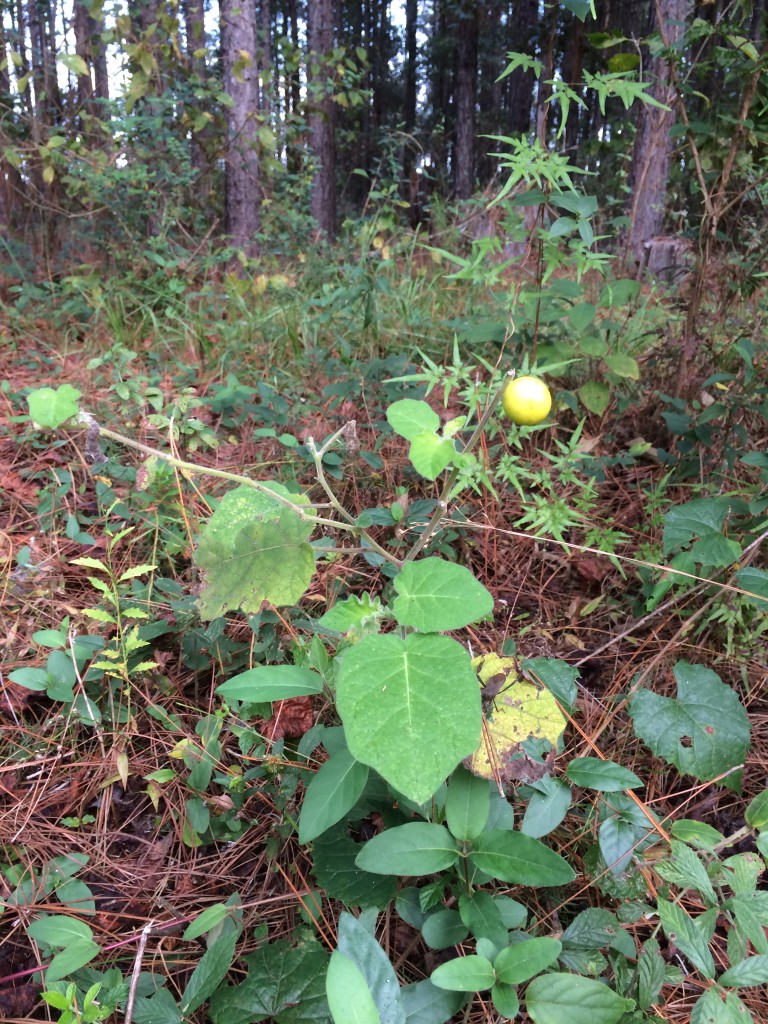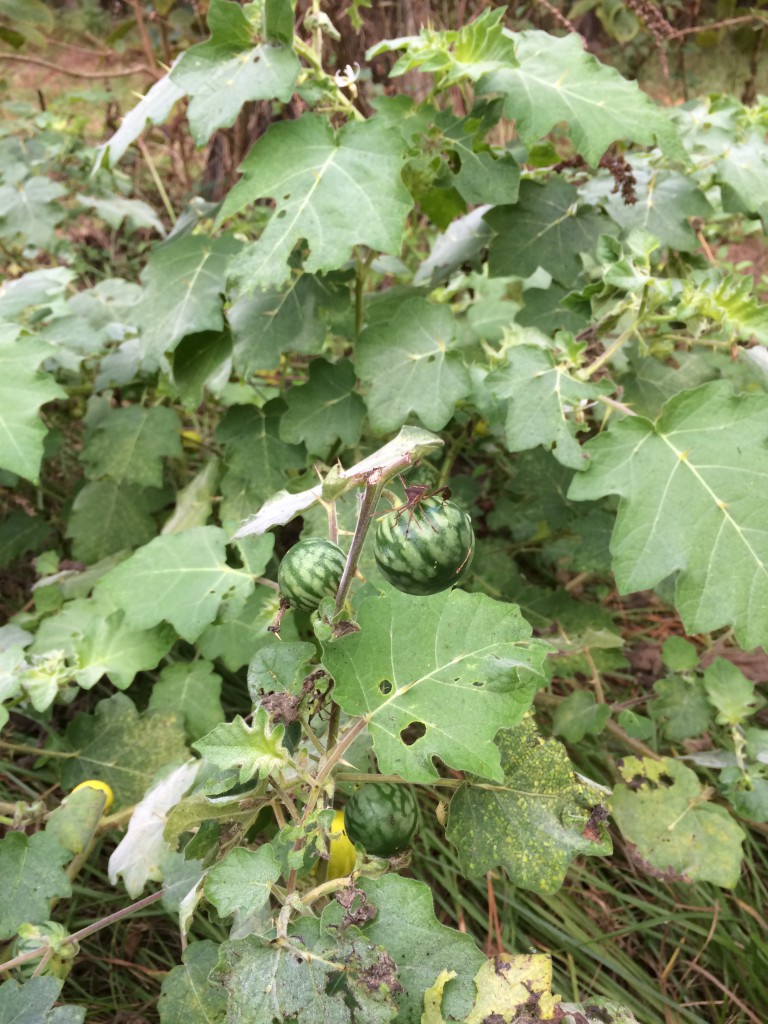
Photo Credit: Shep Eubanks
Every fall, about the time deer hunters begin hanging their tree stands for bow season I get calls wanting to know what this wicked weed is that is growing in the woods. Many of our North Florida cattlemen are well familiar with Tropical Soda Apple (TSA) in pastures, but we also need to be diligent to scout natural areas adjacent to our pastures and hay fields. Tropical soda apple is quite capable of growing in pine stands and semi-shaded areas where you don’t normally expect to encounter it, such as in the stand of 20 year old pines pictured above. Deer, raccoons, and other wildlife will eat the fruit and spread it in their travels about the woodlands, as will cattle if they have access to loaf in these areas.
This invasive weed produces a yellow fruit (see photo 1) when mature (1–1.5 inches in diameter), which contains 200–400 seeds per fruit. Little or no seed dormancy has been observed, and germination is generally greater than 75%. The plant is readily identified by its immature fruit, which are green with white mottling, similar to watermelon (see photo 2). Fruit production occurs throughout the year, but mostly from September through May, providing 40,000–50,000 viable seeds per plant per year.


For control of Tropical Soda apple in areas like this woodlot, the following recommendation on Controlling Tropical Soda Apple by Dr. Brent Sellers, et al. is applicable.
Sparse infestations. Areas with low TSA infestation should be targeted, and each plant sprayed individually. Recommended herbicides for 95%–100% control are as follows:
- Milestone at 0.5–0.8 oz per 2.5 gal (15–20 ml per 2.5 gal) + 0.25% v/v non-ionic surfactant + color marker. (Use a color marker with the herbicide solution to avoid spraying the same plant twice or not spraying a plant at all).
- GrazonNext HL or triclopyr at 0.5% solution (50 ml per 2.5 gal) + 0.25% non-ionic surfactant + color marker.
When spot-spraying, cover the entire plant with spray solution to ensure herbicide uptake and maximum control. Allow herbicides to dry on plants three to four hours before rainfall. Monitor treated areas monthly, and treat new TSA seedlings. Do not allow plants to produce fruit. Be sure to follow the guidelines for spraying volatile herbicides such as triclopyr and 2,4-D. (For more information, see EDIS publication SS-AGR-12, Florida’s Organo-Auxin Herbicide Rule – 2012, http://edis.ifas.ufl.edu/wg051.)
For more information on controlling Tropical Soda Apple Contact your local Extension Agent or these excellent publications:
Tropical soda Apple: Biology, ecology, and management
Classical Biological Control of Tropical Soda Apple
Natural Area Weeds: Invasive Solanum spp. in Florida
 0
0
